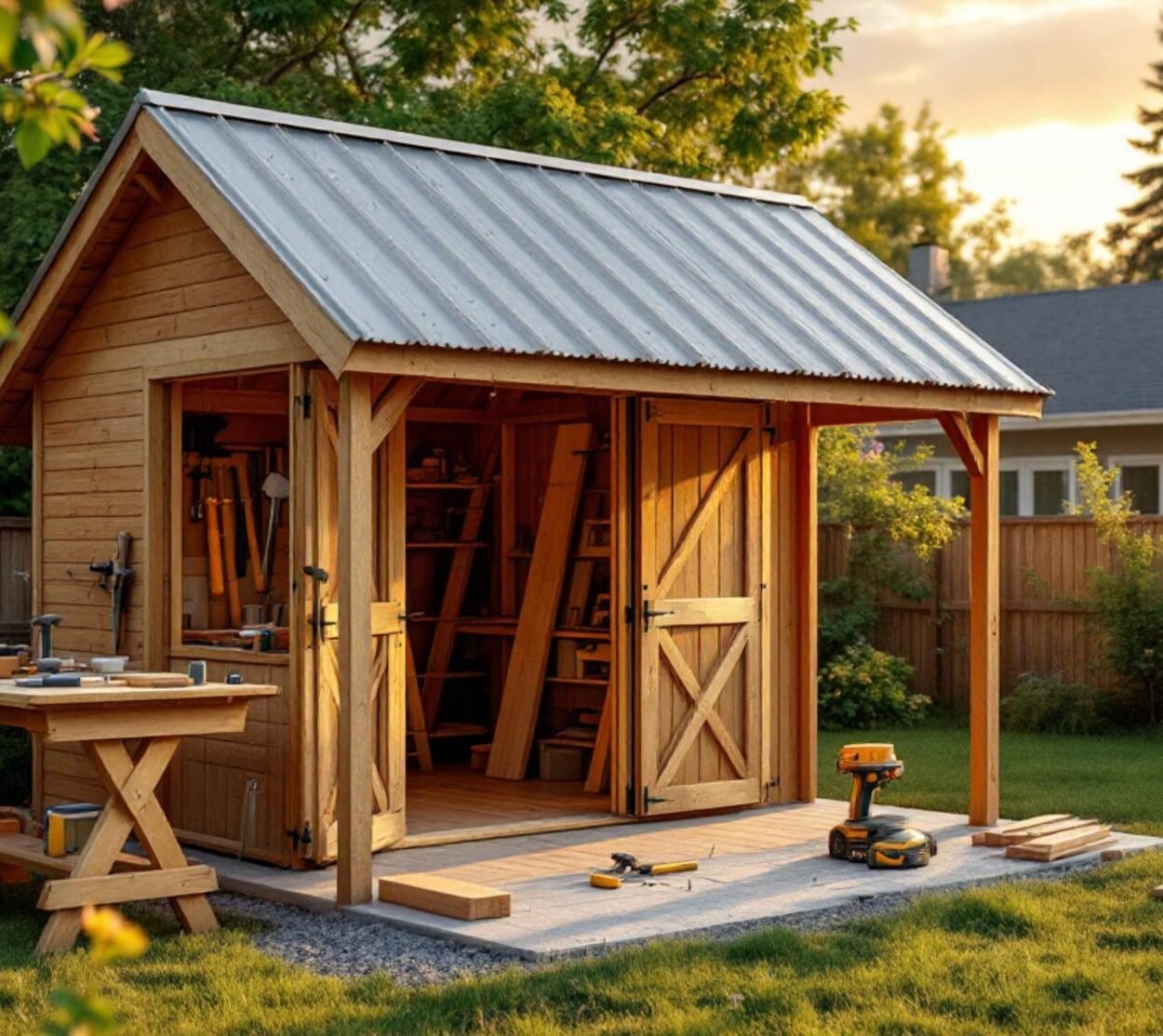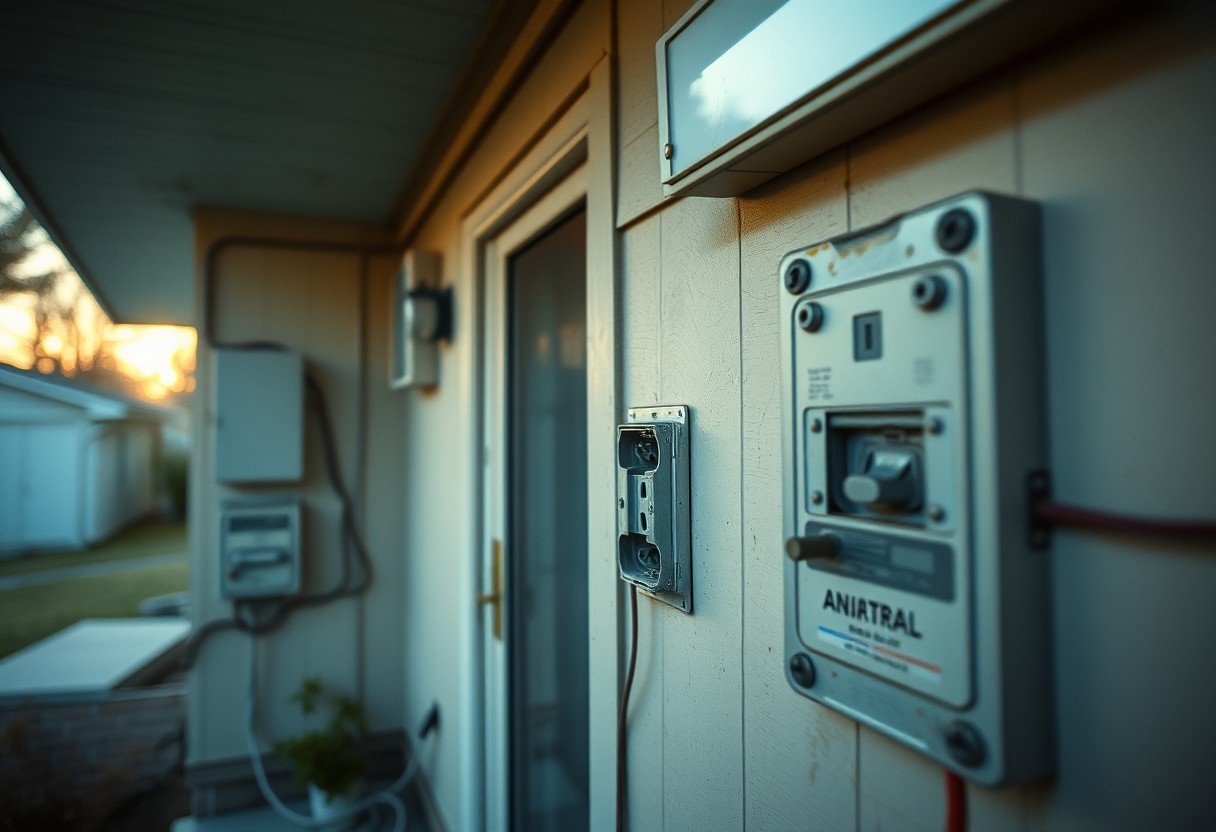Building a lean-to roof on a shed is a fantastic DIY project that adds valuable storage space and protects your belongings from the elements. This guide will walk you through the entire process, from initial planning and gathering materials to the final construction and safety checks. With clear instructions and a bit of patience, you can successfully build a sturdy and functional roof that enhances your shed’s utility and appearance for years to come.
What to Know Before You Start Building
Before you pick up a single tool, it’s crucial to plan your project thoroughly. A lean-to roof is a simple, single-sloped design that leans against the existing shed wall, making it excellent for water and snow runoff. This design is not only practical but also cost-effective because it requires fewer materials than more complex roof types.
However, you must consider a few key factors first. Assess the current condition of your shed to ensure its walls and foundation can handle the extra weight. If the structure seems weak, you may need to add reinforcements before proceeding. Think about your local climate as well. Areas with heavy snow may require a steeper roof slope and stronger framing to manage the load effectively.
Finally, always check with your local municipality about building permits. Some areas have specific regulations regarding shed additions, and getting the proper permissions beforehand can save you from significant headaches later. Planning these details will set you up for a smooth and successful build.
Gathering Your Essential Tools and Materials
Having all your supplies ready before you start is one of the best ways to keep your project on track. There’s nothing more frustrating than having to stop mid-build for a trip to the hardware store. For the structure, you will need lumber that can withstand the outdoors.
Pressure-treated lumber is the best choice for the roof’s framework because it resists rot and insect damage. You will also need sheathing, like plywood or OSB, to create a solid surface for the final roofing material. Don’t forget the small but essential items like nails, screws, and metal connectors for strong joints.
Here are the core materials you’ll need:
- Pressure-treated lumber for the ledger board and rafters
- Plywood or OSB sheathing
- Roofing material (asphalt shingles, metal panels, etc.)
- Roofing felt or underlayment for waterproofing
- Metal flashing and waterproof sealant
- Screws, nails, and hurricane straps or brackets
For tools, you don’t need a professional workshop, but a few key power and hand tools will make the job much easier and more precise. A good saw is essential for accurate cuts, and a reliable drill will speed up the assembly process significantly.
Preparing the Shed for the New Roof
Proper preparation of the existing shed is a critical first step that should not be overlooked. Start by clearing the area around the shed to give yourself plenty of room to work safely. Then, thoroughly clean the shed wall where the new roof will attach. Remove any dirt, grime, or loose paint to ensure a secure connection for the ledger board.
Next, you’ll need to take precise measurements. Determine the height where the roof will attach to the shed and where it will end. This will help you calculate the roof’s slope, or pitch. A common pitch for a lean-to roof is a 3:12 slope, meaning the roof drops 3 inches for every 12 inches of horizontal distance. This angle is generally sufficient for proper water drainage in most climates.
Use your measurements to mark a level line on the shed wall where the top of the ledger board will sit. The ledger board is the horizontal piece of lumber that anchors the rafters to the shed, making it one of the most important structural components. Double-check that your line is perfectly level before moving on.
A Step by Step Guide to Erecting the Structure
With the preparation done, it’s time to build the frame. This is where your lean-to roof starts to take shape. Follow these steps carefully to ensure a strong and stable structure.
- Attach the Ledger Board: Secure the ledger board to the shed wall along the level line you marked earlier. Use heavy-duty lag screws that penetrate through the shed’s siding and into the wall studs for maximum strength.
- Set the Support Posts: If your lean-to extends far from the shed, you will need vertical support posts at the lower end of the roof. Dig footings below the frost line and set the posts in concrete to create a solid foundation.
- Install the Beam: Attach a horizontal beam across the top of your support posts. This beam will support the lower end of the rafters. Ensure it is level and securely fastened to the posts.
- Cut and Attach the Rafters: Cut your rafters to the correct length and angle. The top end will have an angled cut (a bird’s mouth cut) to sit flush on the ledger board, and the bottom end will rest on the outer beam. Space the rafters evenly, typically 16 or 24 inches apart, and secure them at both ends with hurricane straps or other metal connectors for added stability against wind.
Take your time during this phase, constantly checking that everything is level and square. A well-built frame is the key to a long-lasting roof.
Installing the Roofing and Finishing Touches
Once the frame is secure, you can move on to installing the roof covering. Start by laying down the roof sheathing over the rafters. Secure the plywood or OSB sheets with nails or screws, making sure the edges meet over the center of the rafters. This creates a solid deck for your roofing materials.
Next, roll out the roofing felt or a synthetic underlayment over the entire sheathing surface. This layer acts as a crucial moisture barrier, protecting the wood underneath from any water that might get past the shingles or panels. Overlap the rows according to the manufacturer’s instructions, starting from the bottom edge of the roof.
Now you can install your primary roofing material, whether it’s asphalt shingles, metal panels, or another option. Follow the specific installation guide for your chosen material, paying close attention to proper overlapping and fastening techniques. The most critical part of this step is installing flashing where the new roof meets the shed wall. This L-shaped piece of metal prevents water from seeping into the joint, which is the most common source of leaks.
For the finishing touches, consider adding gutters and downspouts to manage rainwater and direct it away from the shed’s foundation. You can also paint or seal any exposed wood to protect it from the elements and match the look of your shed.
Critical Safety Tips for Your Project
Safety should always be your number one priority during any DIY construction project. Building a roof involves working with power tools and at heights, which introduces potential risks. Always wear appropriate personal protective equipment (PPE).
This includes:
- Safety Glasses: To protect your eyes from sawdust, debris, and flying particles.
- Work Gloves: To prevent cuts and splinters when handling lumber and tools.
- Hard Hat: Especially important if there is any risk of falling objects.
- Sturdy, Non-Slip Footwear: To ensure stable footing on ladders and the roof surface.
When working on a ladder, ensure it is placed on firm, level ground. Always maintain three points of contact with the ladder (two feet and one hand, or two hands and one foot) when climbing or descending. Never overreach; instead, get down and move the ladder. If you are working with a partner, communicate clearly to avoid accidents. Finally, be mindful of any overhead power lines before raising long pieces of lumber.
Frequently Asked Questions about Building a Lean to Roof
What is the best slope for a lean to roof?
A good slope for most lean-to roofs is a 3:12 pitch, which means it drops 3 inches for every 12 inches of horizontal run. This is generally enough for rain and light snow to drain properly. In areas with heavy snowfall, a steeper slope like 4:12 or greater may be necessary.
Can I build a lean to roof on any shed?
No, it is essential to first assess your shed’s structural integrity. The wall that will support the lean-to roof must be strong enough to handle the additional weight. If your shed is old or made of flimsy materials, you may need to reinforce the wall framing first.
What are the best roofing materials for a shed?
The best material depends on your budget, climate, and desired look. Asphalt shingles are affordable and easy to install. Metal roofing is more durable and excellent for shedding snow and rain. Rolled roofing is another budget-friendly option for low-slope roofs.
Do I need a permit to build a lean to roof on my shed?
This depends entirely on your local building codes. Many municipalities require a permit for any structural addition, even on a shed. It is always best to check with your local planning or building department before you begin construction to avoid potential fines.
How do I waterproof the seam where the roof meets the shed wall?
Properly installing metal flashing is the key to waterproofing this joint. The flashing should be installed under the shed’s siding and over the new roof’s underlayment and shingles. Applying a line of high-quality exterior sealant along the top edge of the flashing provides an extra layer of protection against leaks.








Leave a Comment